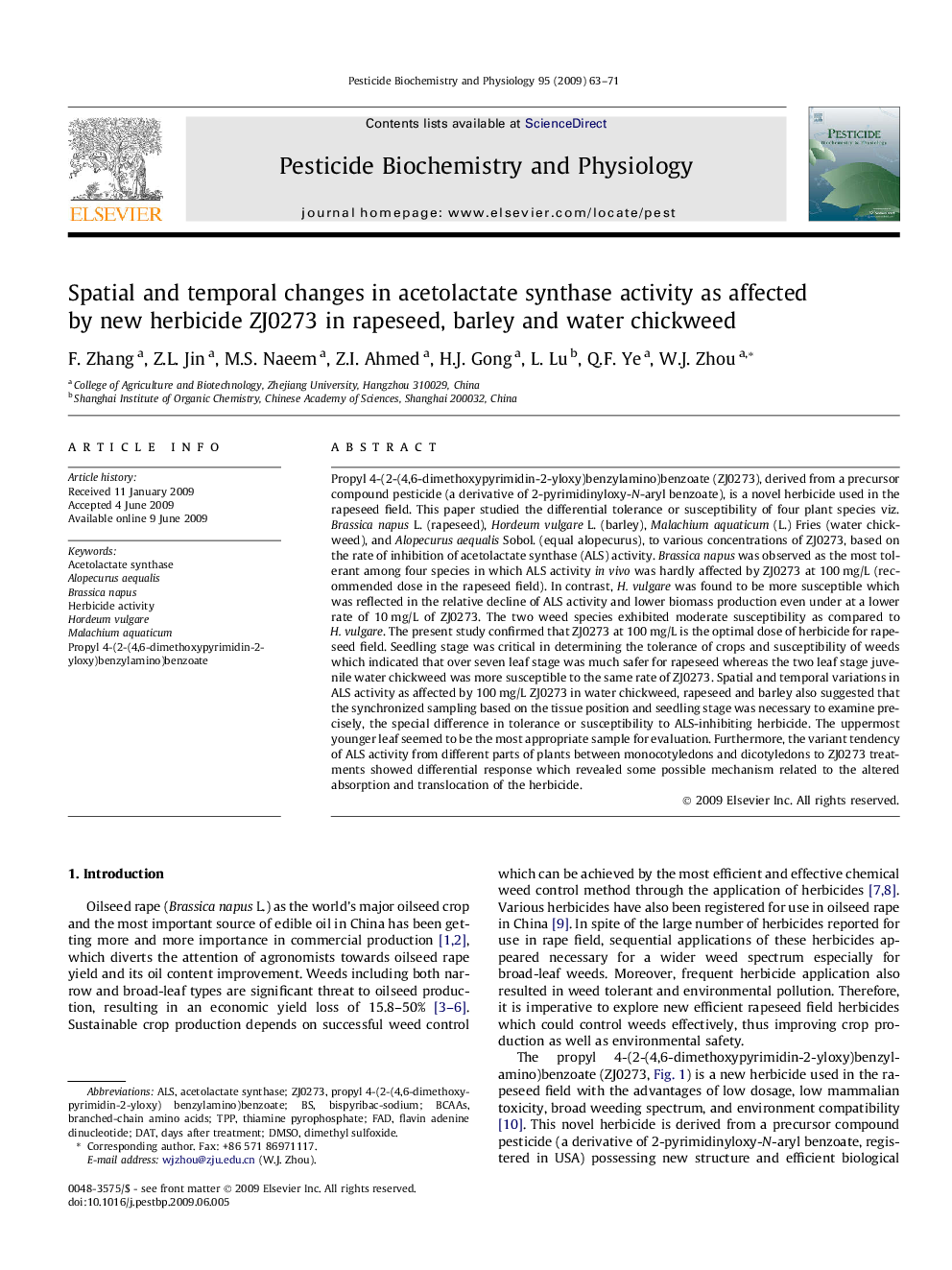| Article ID | Journal | Published Year | Pages | File Type |
|---|---|---|---|---|
| 2010210 | Pesticide Biochemistry and Physiology | 2009 | 9 Pages |
Abstract
Propyl 4-(2-(4,6-dimethoxypyrimidin-2-yloxy)benzylamino)benzoate (ZJ0273), derived from a precursor compound pesticide (a derivative of 2-pyrimidinyloxy-N-aryl benzoate), is a novel herbicide used in the rapeseed field. This paper studied the differential tolerance or susceptibility of four plant species viz. Brassica napus L. (rapeseed), Hordeum vulgare L. (barley), Malachium aquaticum (L.) Fries (water chickweed), and Alopecurus aequalis Sobol. (equal alopecurus), to various concentrations of ZJ0273, based on the rate of inhibition of acetolactate synthase (ALS) activity. Brassica napus was observed as the most tolerant among four species in which ALS activity in vivo was hardly affected by ZJ0273 at 100Â mg/L (recommended dose in the rapeseed field). In contrast, H. vulgare was found to be more susceptible which was reflected in the relative decline of ALS activity and lower biomass production even under at a lower rate of 10Â mg/L of ZJ0273. The two weed species exhibited moderate susceptibility as compared to H. vulgare. The present study confirmed that ZJ0273 at 100Â mg/L is the optimal dose of herbicide for rapeseed field. Seedling stage was critical in determining the tolerance of crops and susceptibility of weeds which indicated that over seven leaf stage was much safer for rapeseed whereas the two leaf stage juvenile water chickweed was more susceptible to the same rate of ZJ0273. Spatial and temporal variations in ALS activity as affected by 100Â mg/L ZJ0273 in water chickweed, rapeseed and barley also suggested that the synchronized sampling based on the tissue position and seedling stage was necessary to examine precisely, the special difference in tolerance or susceptibility to ALS-inhibiting herbicide. The uppermost younger leaf seemed to be the most appropriate sample for evaluation. Furthermore, the variant tendency of ALS activity from different parts of plants between monocotyledons and dicotyledons to ZJ0273 treatments showed differential response which revealed some possible mechanism related to the altered absorption and translocation of the herbicide.
Keywords
Related Topics
Life Sciences
Agricultural and Biological Sciences
Agronomy and Crop Science
Authors
F. Zhang, Z.L. Jin, M.S. Naeem, Z.I. Ahmed, H.J. Gong, L. Lu, Q.F. Ye, W.J. Zhou,
